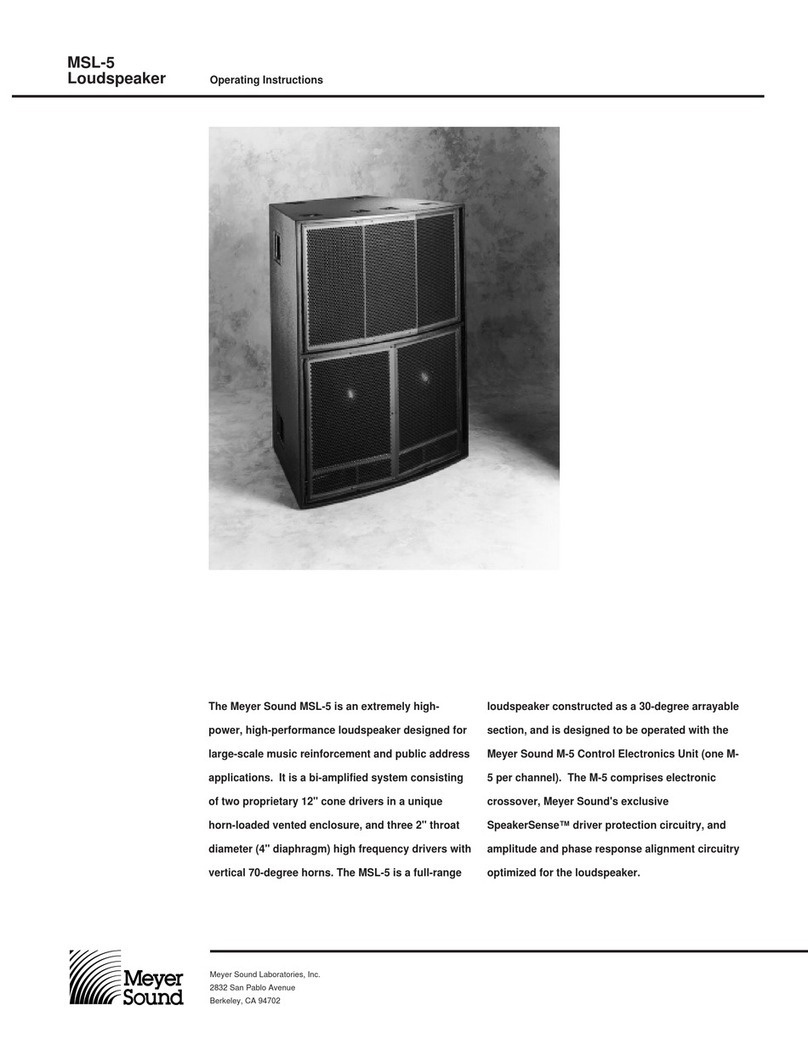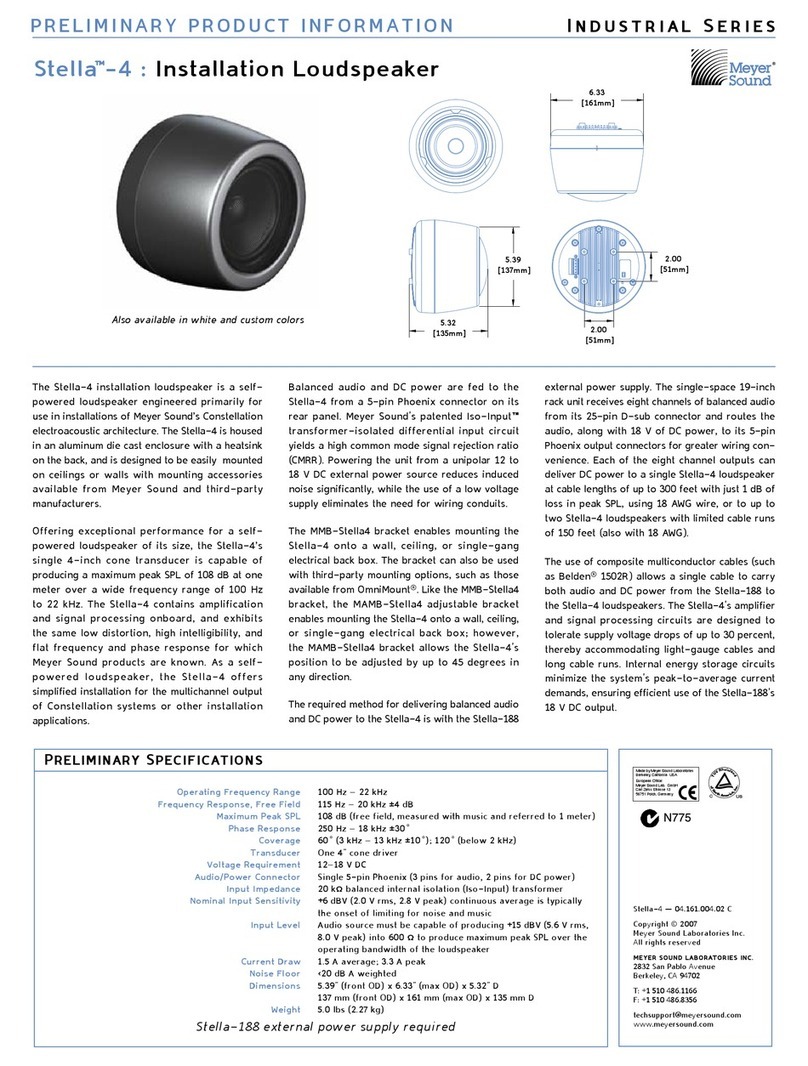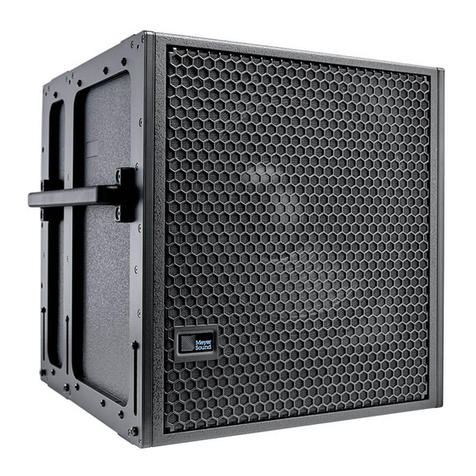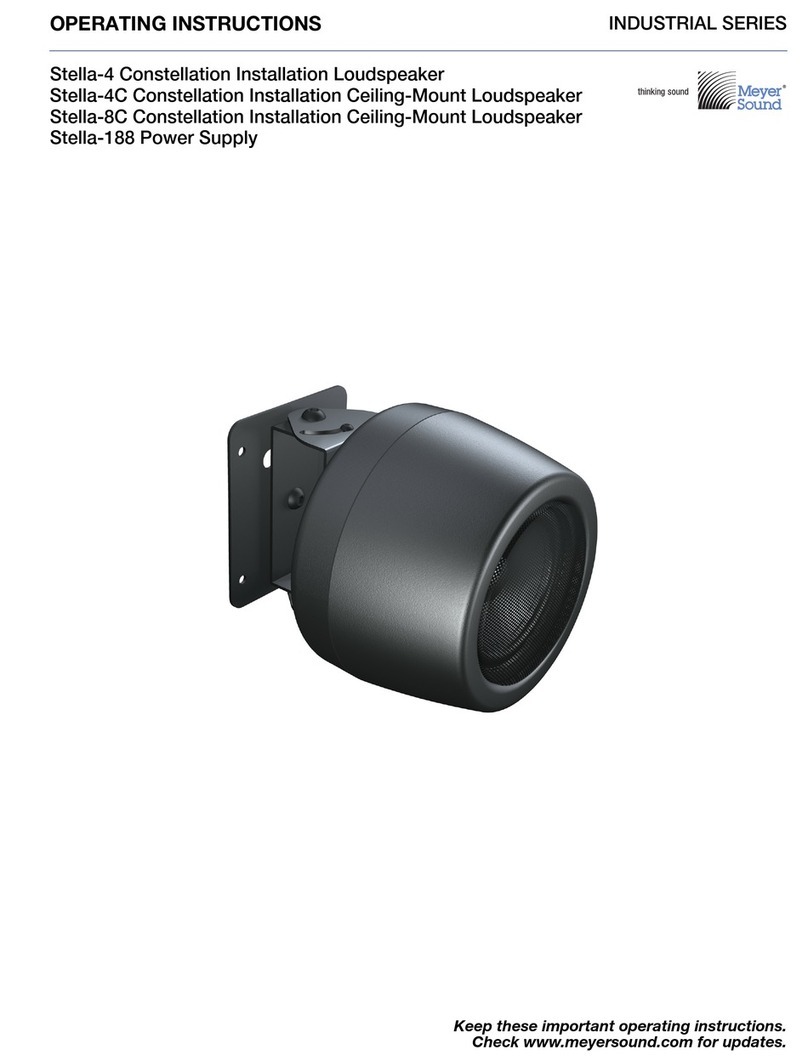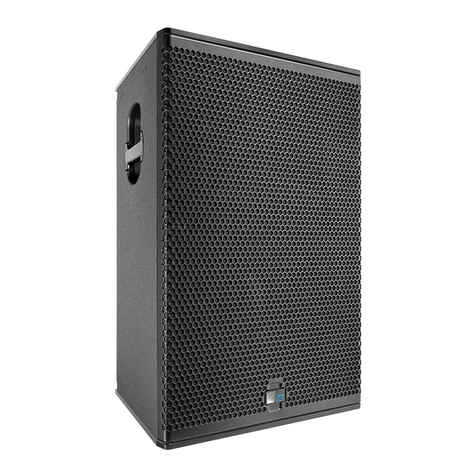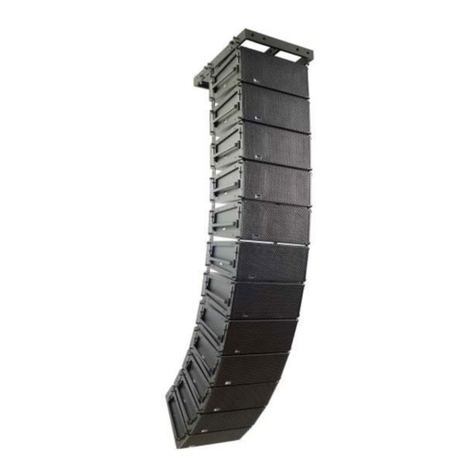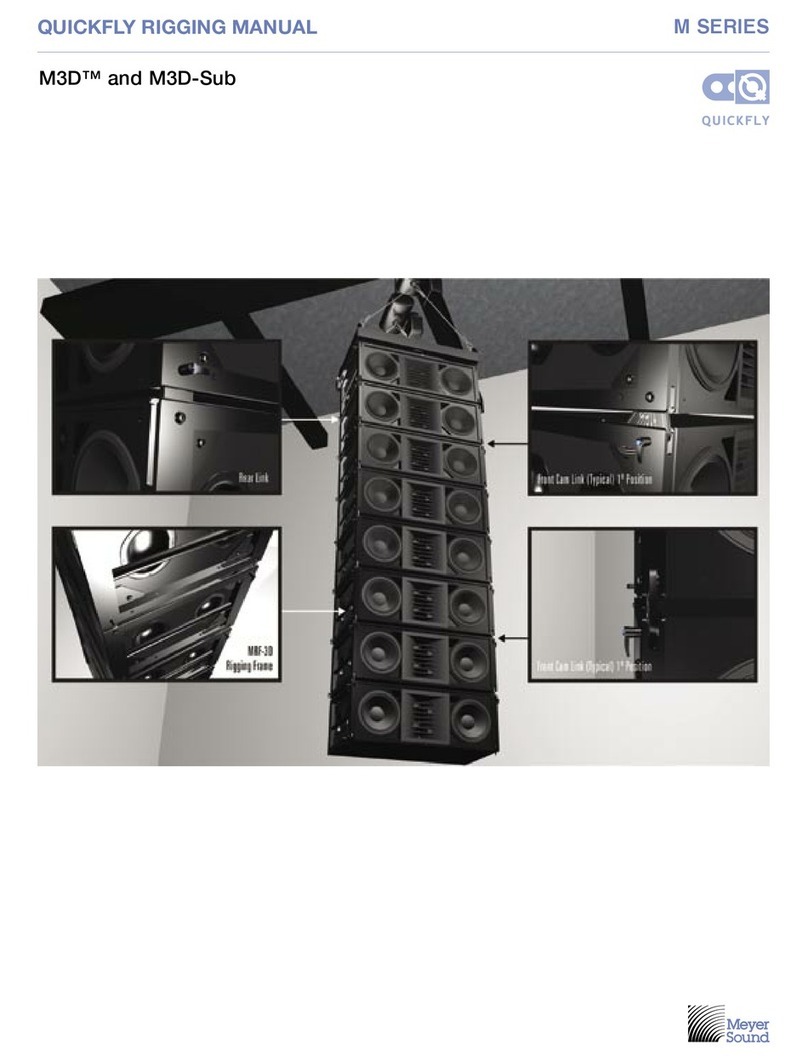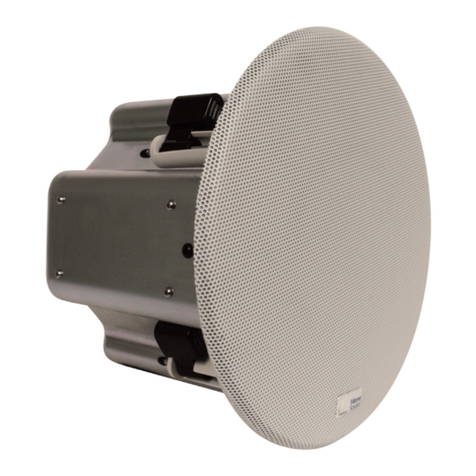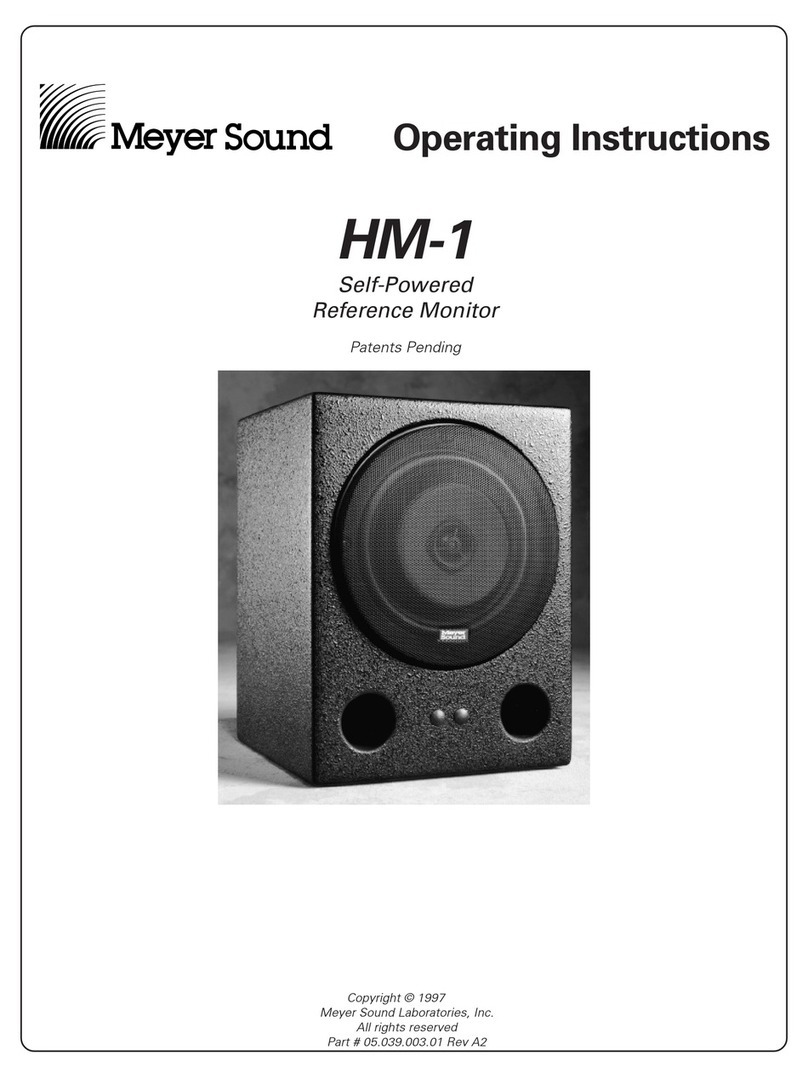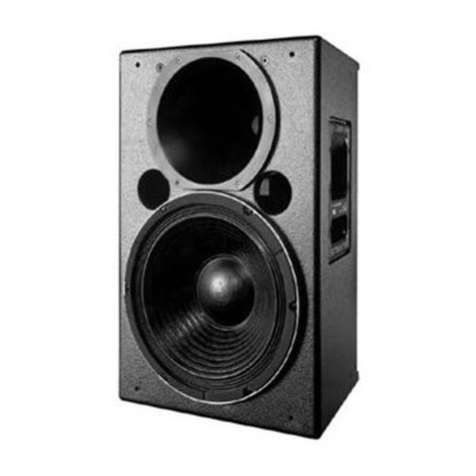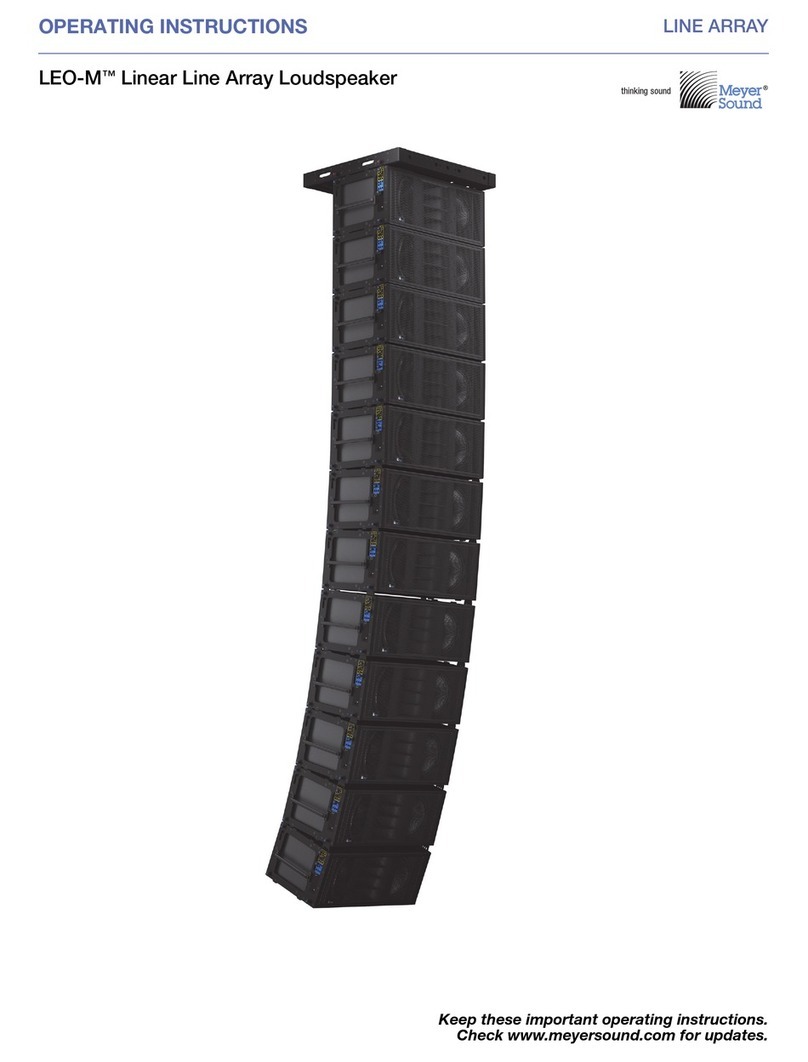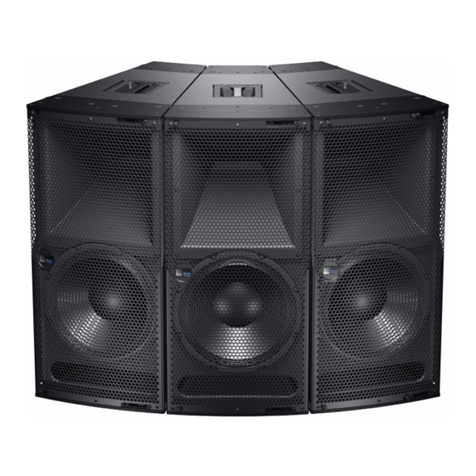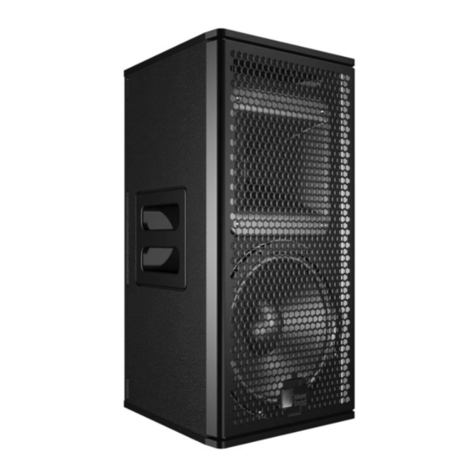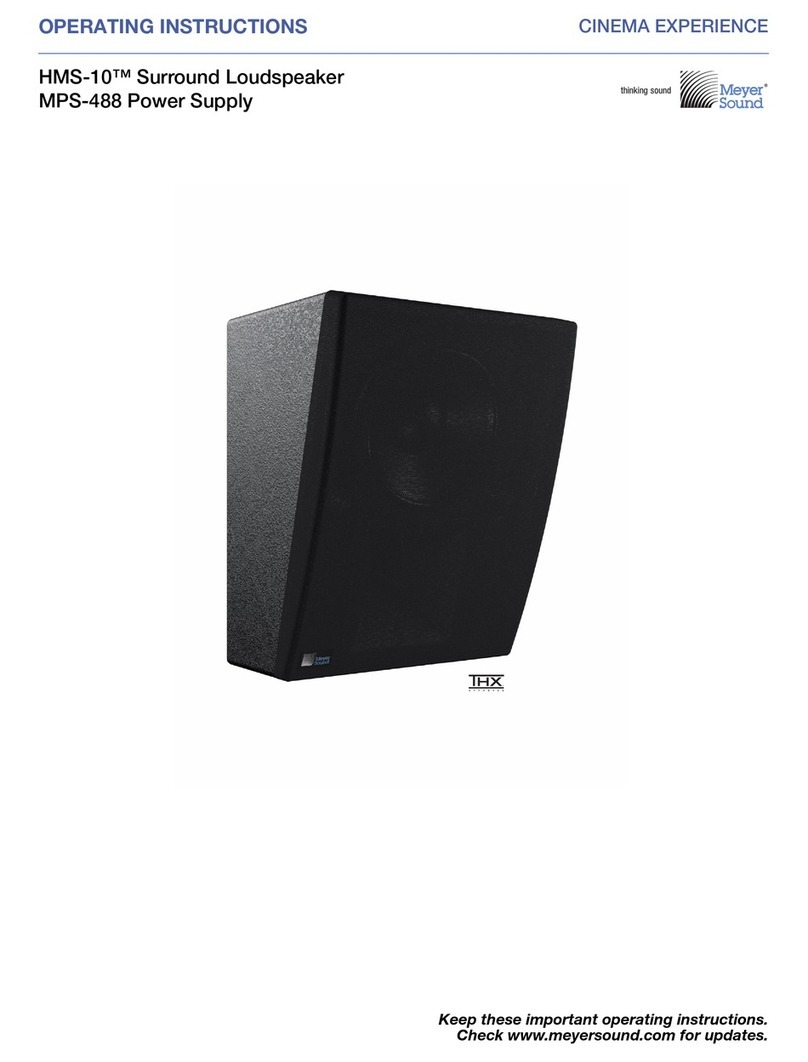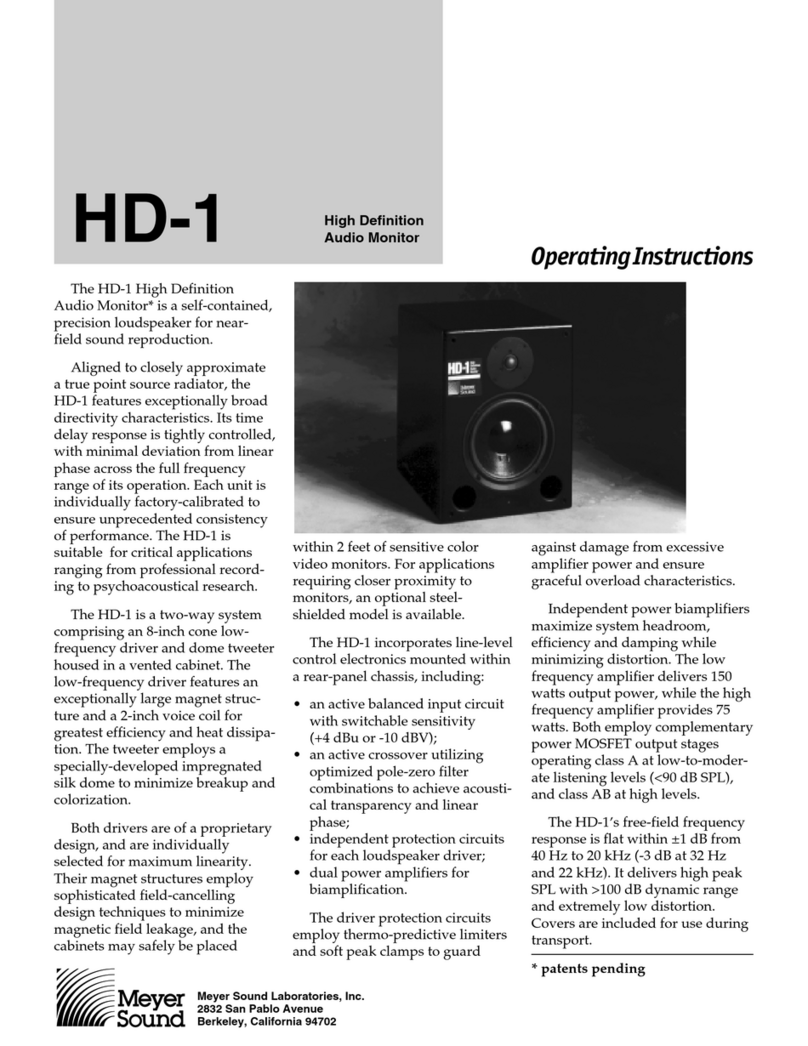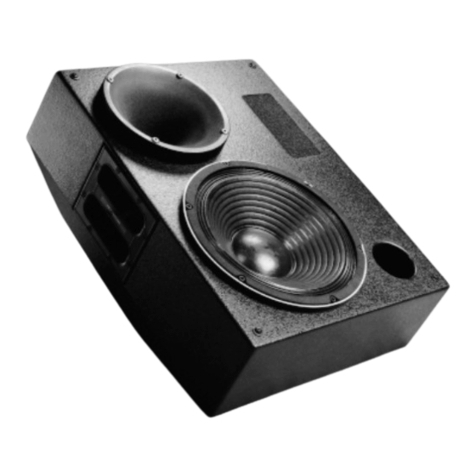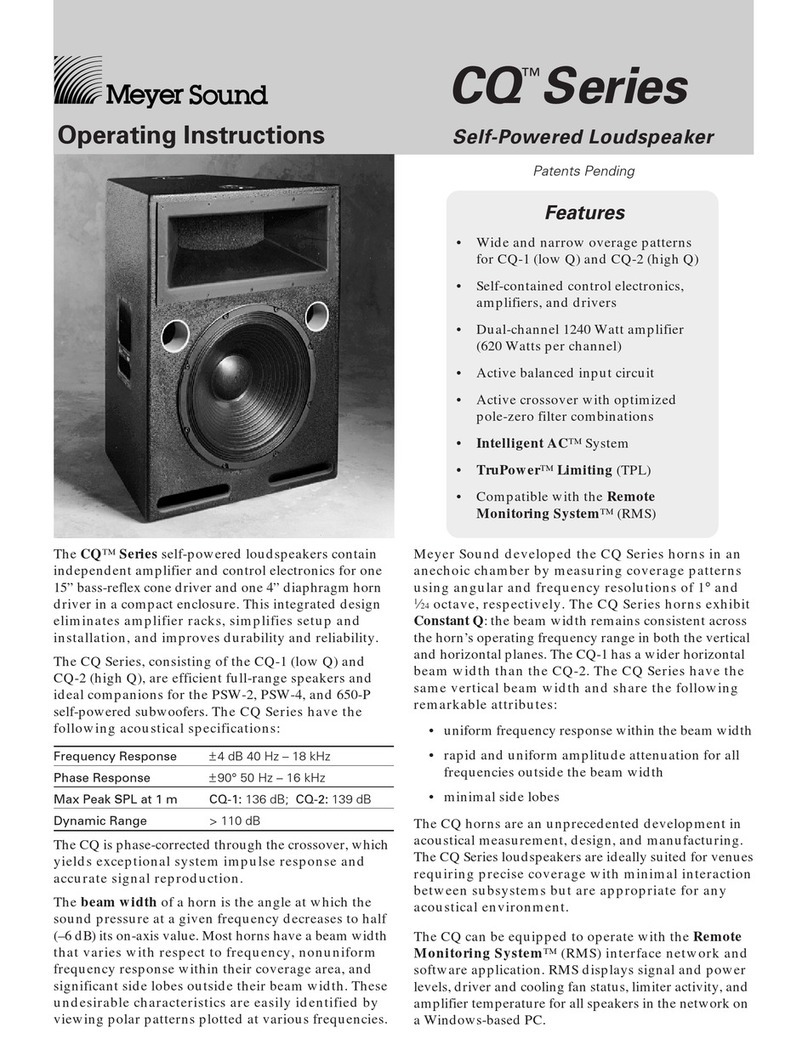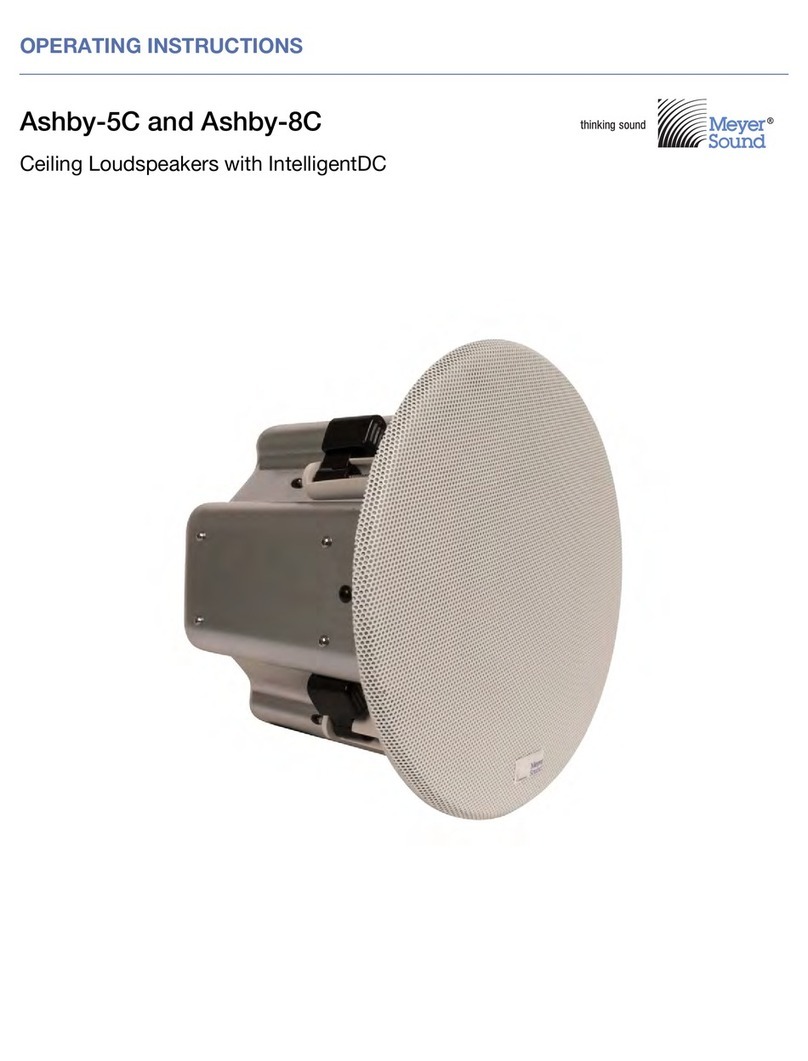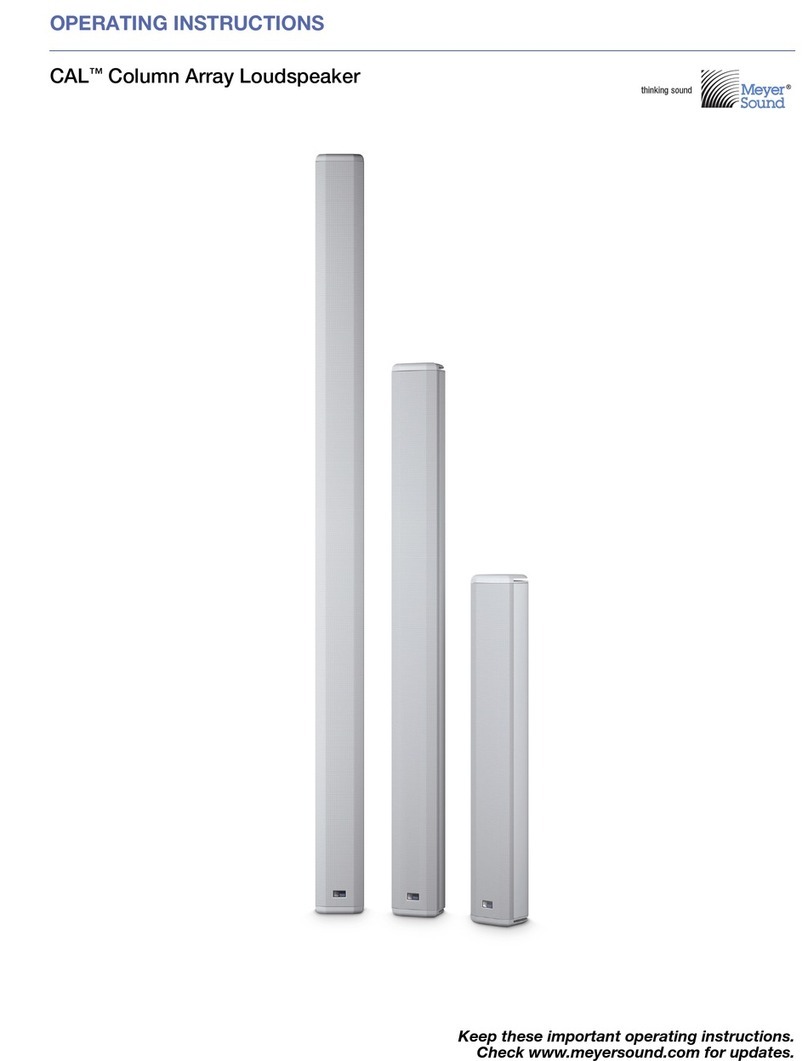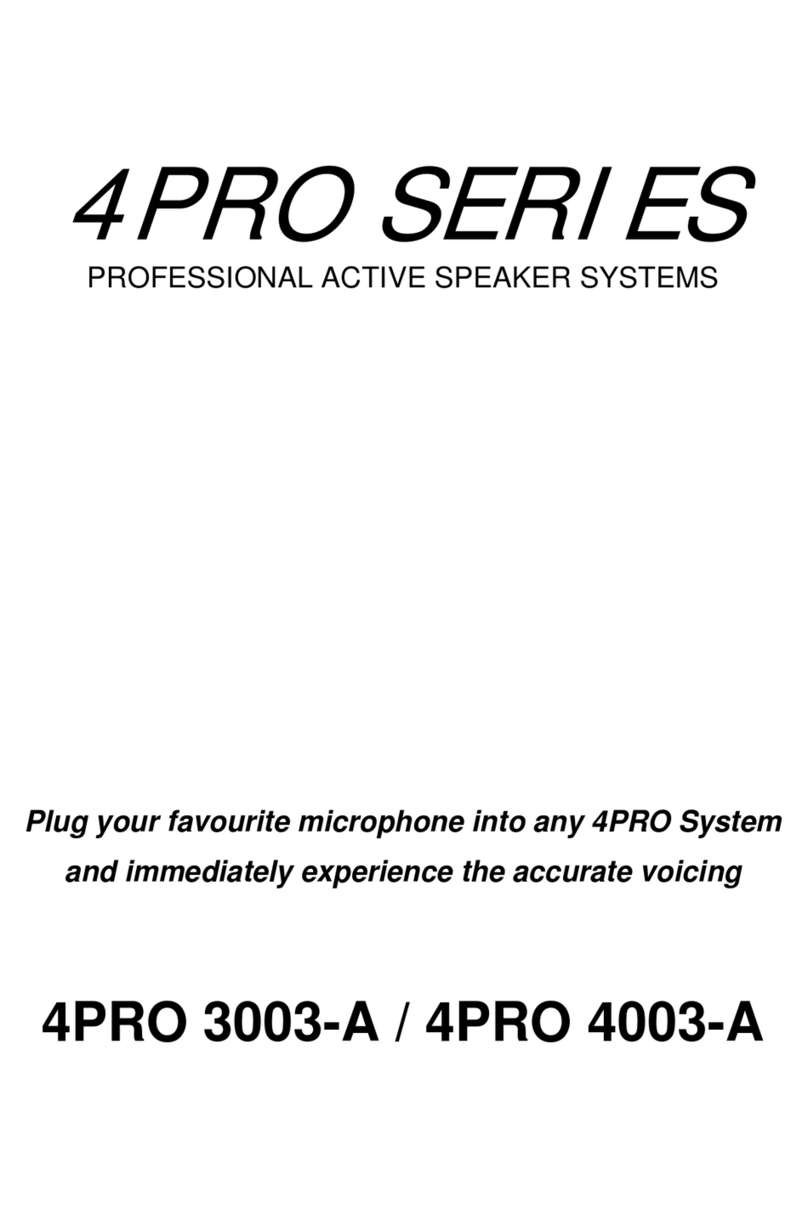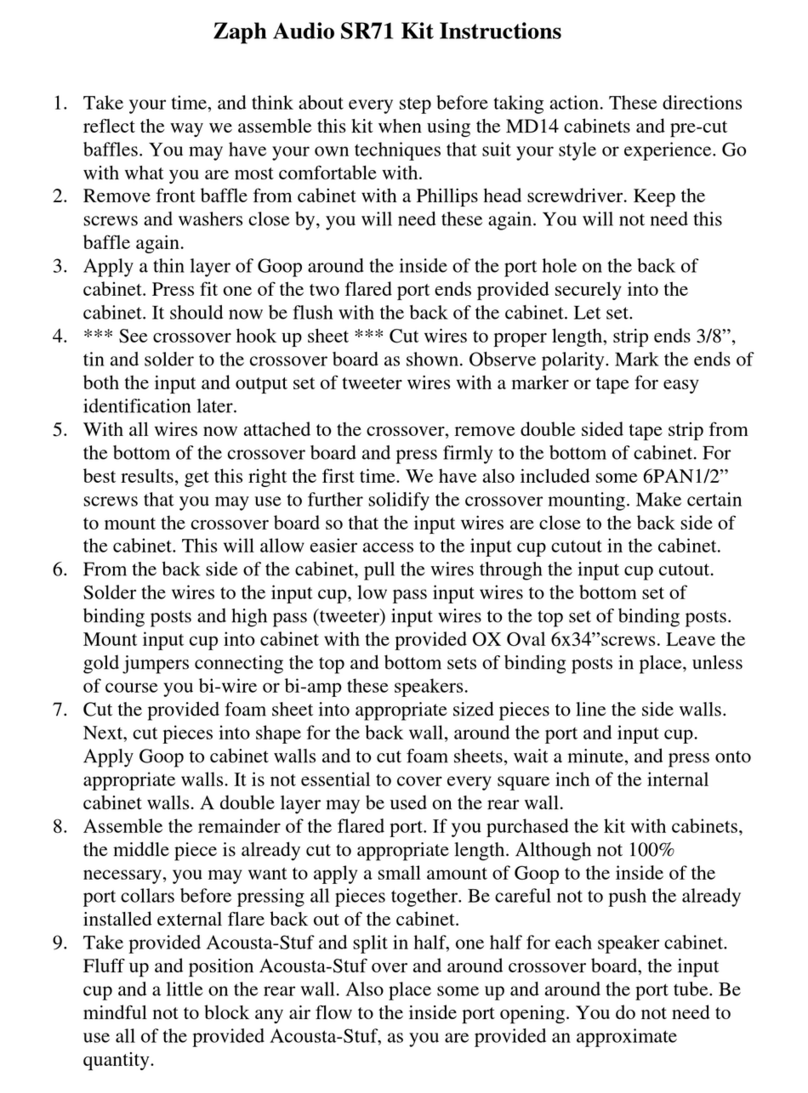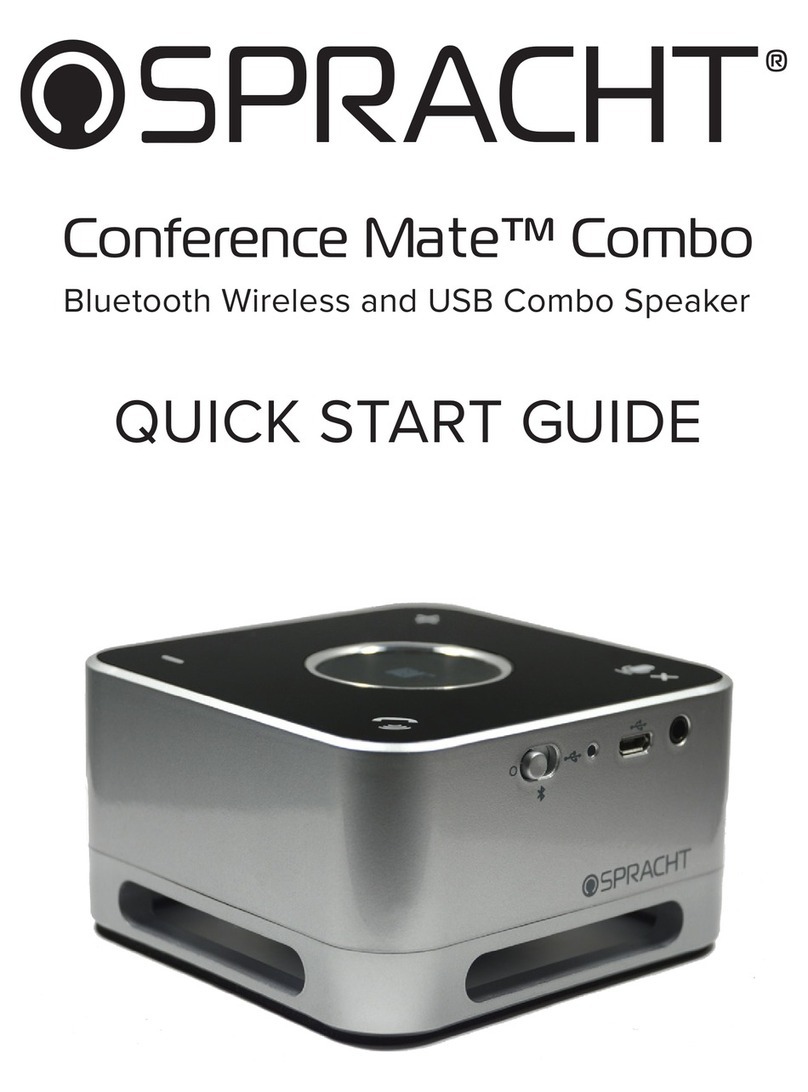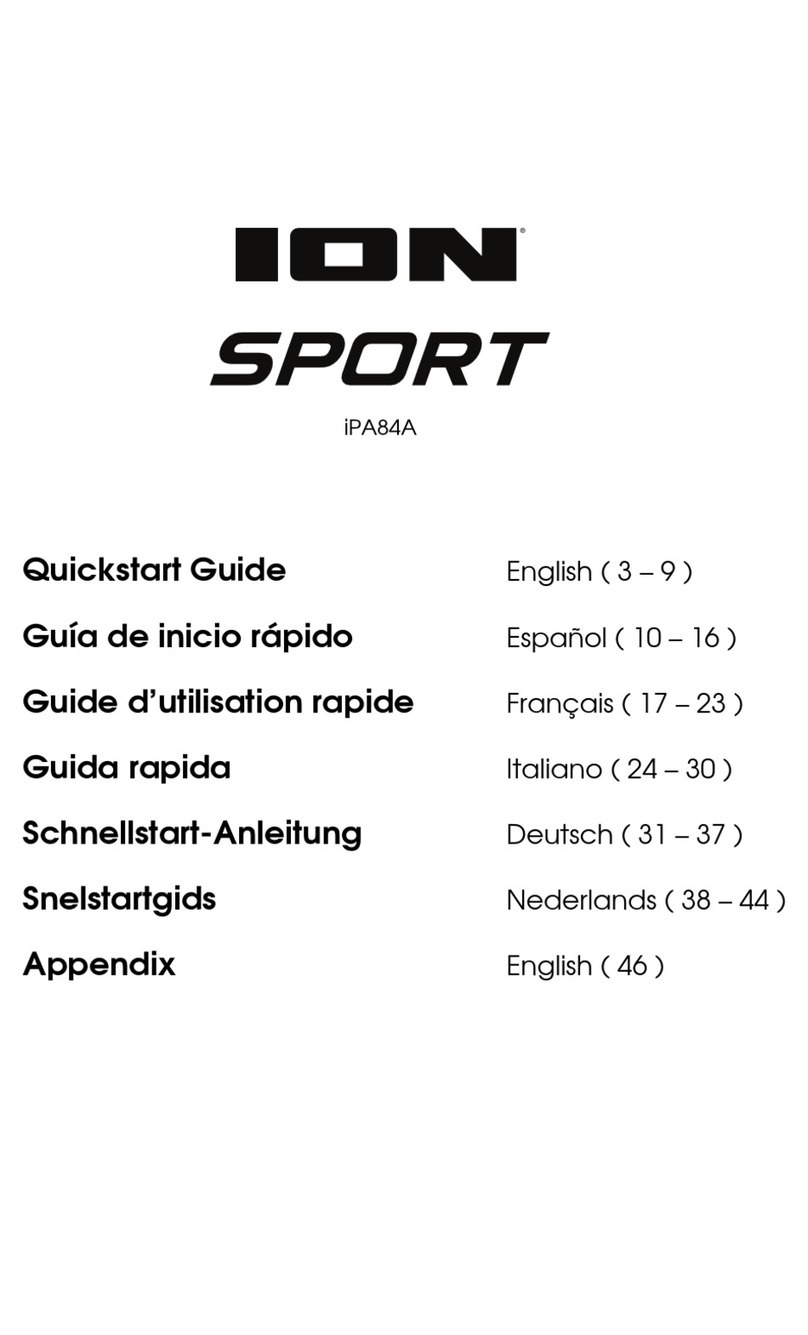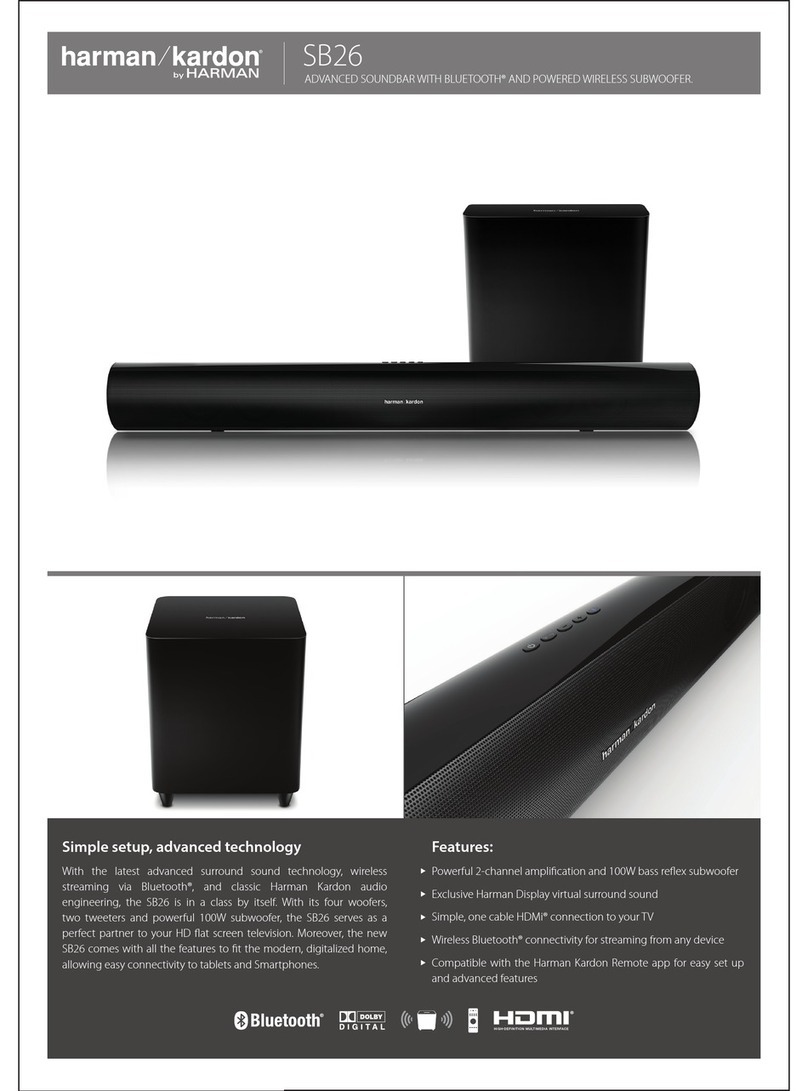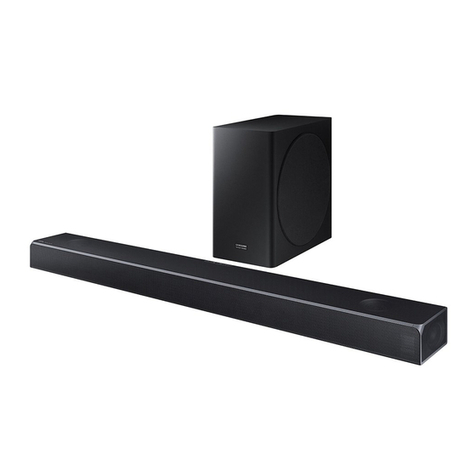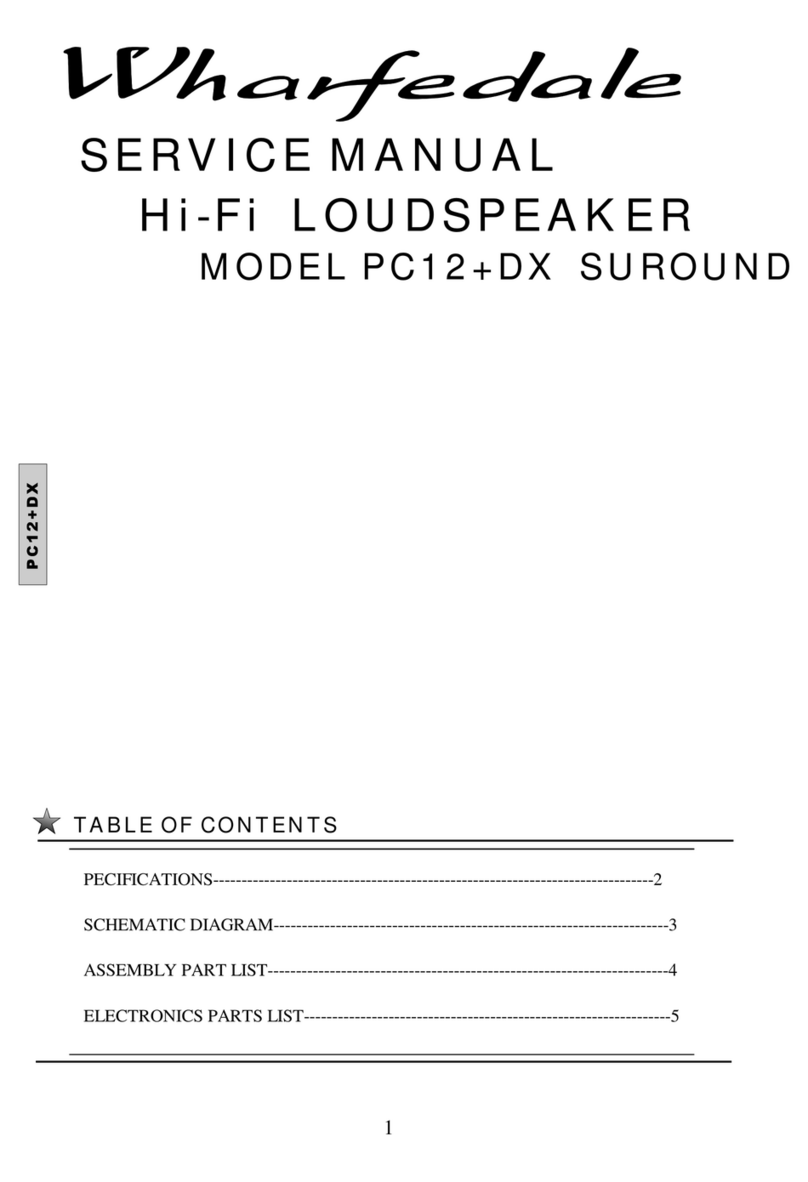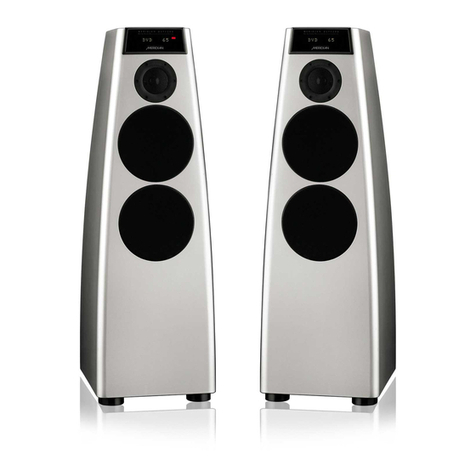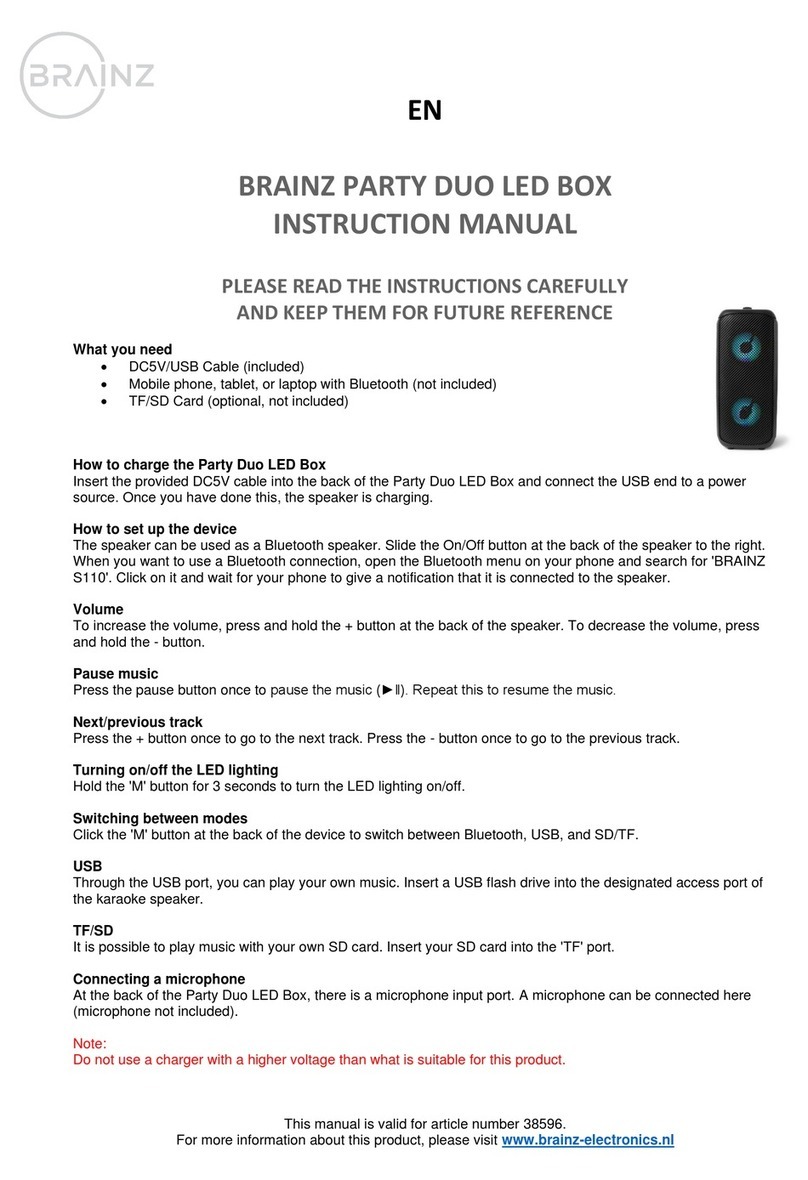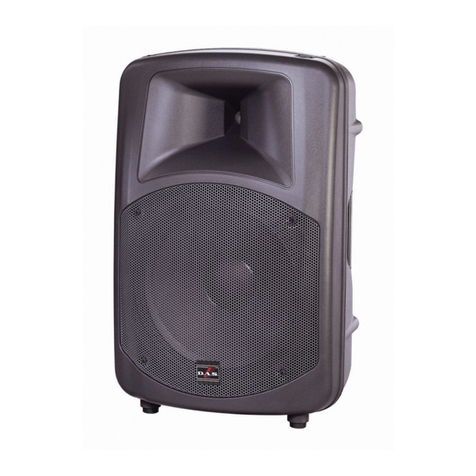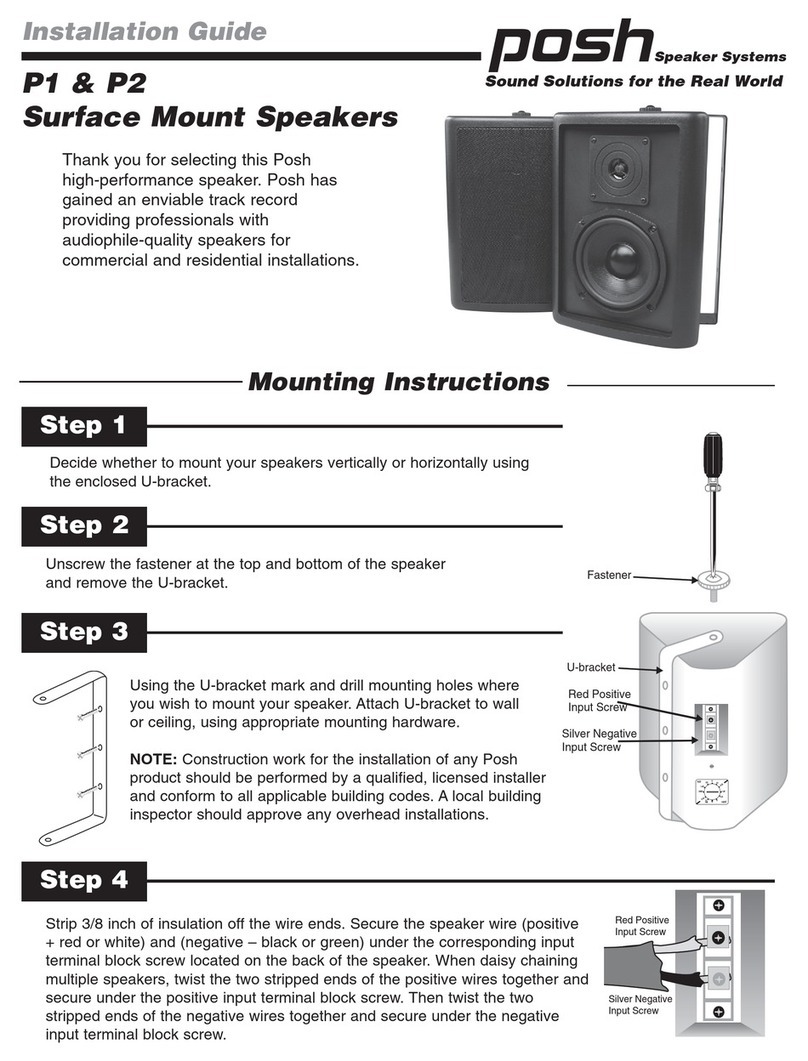
M1D specifications
1. The low-frequency power response
of the system will increase according
to the length of the array.
2. Recommended maximum operating
frequency range. Response depends
on loading conditions and room
acoustics.
3. Free field, measured with 1/3 octave
frequency resolution at 4 meters.
4. Measured with music at 1 meter.
5. At these frequencies, the transducers
produce equal sound pressure levels.
6. To eliminate interference at short
wavelengths, the two 5-inch
drivers work in combination at low
frequencies (60 Hz – 1000 Hz). At
mid frequencies (1000 Hz – 1900
Hz) only one cone driver is fed from
the crossover to maintain optimal
polar and frequency response
characteristics.
7. Power handling is measured under
AES standard conditions: transducer
driven continuously for two hours
with band-limited noise signal having
a 6 dB peak-average ratio.
8. The three drivers are coupled to a
constant-directivity horn.
9. Wattage rating is based on the
maximum unclipped burst sine-
wave rms voltage that the amplifier
will produce into the nominal load
impedance. Low channel: 30 V rms (42
V pk); high channel: 27 V rms (38 V pk)
10. No automatic turn-off voltages.
Voltages above 264 V AC are fuse
protected but may cause permanent
damage to the power supply.
Voltages below 90 V AC may result in
intermittent operation.
11. Current draw for a single loudspeaker.
Loop out not used.
architect specifications
meyer sound laboratories inc.
2832 San Pablo Avenue
Berkeley, CA 94702
T: +1 510 486.1166
F: +1 510 486.8356
techsupport@meyersound.com
www.meyersound.com
M1D - 04.115.001.01
Made by Meyer Sound, Berkeley, CA, USA
European Office:
Meyer Sound Germany
GmbH
Carl Zeiss Strasse 13
56751 Polch, Germany
Copyright © 2003
Meyer Sound Laboratories Inc.
All rights reserved
Operating Frequency Range2
Frequency Response3
Phase Response
Maximum Peak SPL4
Dynamic Range
Horizontal Coverage
Vertical Coverage
Low Frequency6
High Frequency8
Type
Maximum Common Mode Range
Connectors
Input Impedance
Wiring
DC Blocking
CMRR
RF Filter
TIM Filter
Nominal Input Sensitivity
Input Level
Type
Output Power9
THD, IM, TIM
Load Capacity
Cooling
Connector
Voltage Selection
Safety Agency Rated Operating Range
Turn-on and Turn-off Points10
Current Draw
11
:
Idle Current
Max Long-Term Continuous Current (>10 sec)
Burst Current (<1 sec)
Ultimate Short-Term Peak Current Draw
Inrush Current
60 Hz - 18 kHz
75 Hz - 15 kHz ±4 dB
800 Hz - 12 kHz ±45°
125 dB
>110 dB
100°
Varies, depending on array length and configuration; for a single
loudspeaker, 10° minimum
1900 Hz
Two 5" cone drivers
Nominal impedance: 8 Ω
Voice coil size: 1"
Power-handling capability: 200 W (AES)7
Three 0.75" metal dome tweeters with neodymium magnets
Nominal impedance: 8 Ω
Voice coil size: 20 mm
Power-handling capability: 15 W (AES)7
Differential, electronically balanced
±15 V DC, clamped to earth for voltage transient protection
Female XLR input with male XLR loop output
10 kΩ differential between pins 2 and 3
Pin 1: Chassis/earth through 220 kΩ, 1000 pF, 15 V clamp network to
provide virtual ground lift at audiofrequencies
Pin 2: Signal +
Pin 3: Signal -
Case: Earth ground and chassis
Differential DC blocking up to max common mode voltage
>50 dB, typically 80 dB (50 Hz - 500 Hz)
Common mode: 425 kHz; Differential mode: 142 kHz
Integral to signal processing (<80 kHz)
0 dBV (1 V rms, 1.4 V pk) continuous average is typically the onset of
limiting for pink noise and music
Audio source must be capable of producing a minimum of +20 dBV (10
V rms, 14 V pk) into 600 Ω inorder to produce maximum peak SPL over
the operating bandwidth of the loudspeaker
Two-channel complementary MOSFET output stages (class AB/bridged)
500 W total
<.02%
4 Ω low channel, 2 Ω high channel
Forced air cooling over amplifier heatsink
PowerCon with looping output
Automatic
100 V AC - 240 V AC; 50/60 Hz
Continuous 90 V AC - 264 V AC; 50/60 Hz
0.41 A rms (115 V AC); 0.33 A rms (230 V AC); 0.42 A rms (100 V AC)
3.2 A rms (115 V AC); 1.6 A rms (230 V AC); 3.7 A rms (100 V AC)
5.0 A rms (115 V AC); 2.5 A rms (230 V AC); 5.8 A rms (100 V AC)
17 A pk (115 V AC); 8.5 A pk (230 V AC); 20 A pk (100 V AC)
15 A pk (115 V AC); 13 A pk (230 V AC); 15 A pk (100 V AC)
Equipped for two conductor twisted-pair network, reporting all
operating parameters ofamplifiers to system operator’s host computer.
Acoustical1
Coverage
Crossover5
Transducers
Audio Input
Amplifiers
AC Power
RMS Network
The loudspeaker shall be a self-powered, full-range system
for deployment in vertical curvilinear array systems. The low-
frequency transducers shall consist of two 5-inch cone drivers
with 1-inch voice coil. The high-frequency transducers shall
be three 0.75-inch metal dome tweeters coupled via a custom
manifold to a 100° horizontal constant directivity horn.
The loudspeaker shall incorporate internal processing elec-
tronics and a two-channel amplifier. Processing functions
shall include equalization, phase correction, driver protection
and signal division for the high- and low-frequency sections.
The crossover point (equal sound pressure levels between
high and low frequency transducers) shall be 1900 Hz. An
additional passive low-frequency crossover shall cause
the two low-frequency transducers to work in combination
between 60 and 1000 Hz, with only one working between
1000 Hz and 1900 Hz, to maintain optimal polar response
characteristics.
Each amplifier channel shall be class AB/bridged with
complementary MOSFET output stages. Burst capability shall
Notes:
be 500 watts total. Distortion (THD, IM, TIM) shall not exceed
0.02%. Protection circuits shall include peak and rms limit-
ing. The audio input shall be electronically balanced with a
10 kOhm impedance and accept a nominal 0 dBV (1 V rms, 1.4
V pk) signal (+20 dBV to produce maximum SPL). Connectors
shall be XLR (A-3) type male and female. RF filtering shall
be provided, and CMRR shall be greater than 50 dB (80 dB,
50 – 500 Hz).
Performance specifications for a typical production unit shall
be as follows, measured at 1/3 octave resolution: Operating
frequency range shall be 60 Hz to 18 kHz. Phase response
shall be ±45° from 800 Hz to 12 kHz. Maximum SPL shall be
125 dB at 1 m. Beamwidth shall be 100° horizontal. Vertical
coverage in multi-cabinet arrays shall be dependent on
system configuration; for a single cabinet, the minimun shall
be 10°.
The internal power supply shall perform automatic voltage
selection, EMI filtering, and surge suppression. Powering
requirements shall be nominal 90 V AC to 264 V AC line cur-
rent at 50 Hz or 60 Hz. UL and CE operating voltage range
shall be 100 V AC to 240 V AC. Current draw during burst
shall be 5 A rms at 115 V AC, 2.5 A rms at 230 V AC and
5.8 A rms at 100 V AC. Inrush current during turn-on shall
not exceed 15 A at 115 V. AC power connectors shall be
PowerCon with looping output.
The loudspeaker system shall incorporate the electronics
module for Meyer Sound’s RMS remote monitoring system.
All loudspeaker components shall be mounted in an
enclosure constructed of multi-ply hardwood with a
black textured finish. The front protective grille shall be
powder-coated, hex stamped steel. Dimensions shall be
23.04" wide x 7.12" high x 8.50" deep (585 mm x 181 mm x
216 mm). Weight shall be 31 lbs (14 kg).
The loudspeaker shall be the Meyer Sound M1D.
